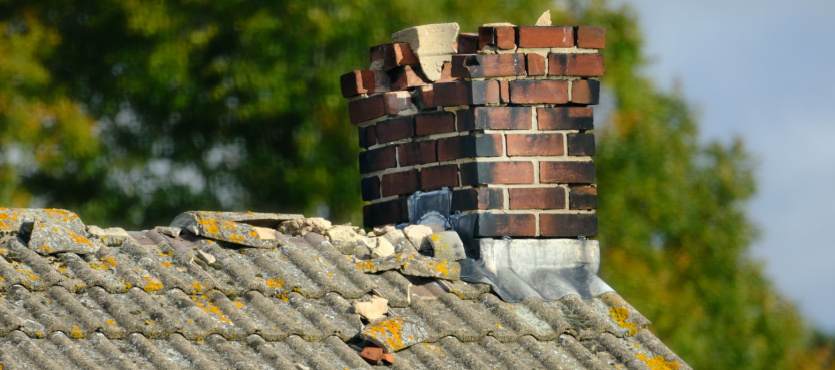Deterioration of an internal chimney can have several side effects, some of which can pose risks to the occupants and the structure itself. One of the most dangerous consequences of chimney deterioration is the potential for carbon monoxide (CO) leakage into the living space. Cracks, gaps, or blockages in the chimney can cause combustion byproducts, including CO, to enter the home rather than being properly vented outside.
Given the potential risks associated with internal chimney deterioration, it is crucial to regularly inspect and maintain chimneys to ensure they remain in safe and working condition. If you suspect chimney deterioration, it is recommended to consult a professional chimney inspector or a chimney sweep for a thorough assessment and necessary repairs. To help you understand what leads to internal chimney deterioration, we’ve put together some leading factors that can cause this:
Factors Leading to Internal Chimney Deterioration
- Creosote Buildup
Creosote is a highly flammable substance that is a byproduct of burning wood or fossil fuels. Over time, creosote can accumulate on the interior walls of the chimney, leading to a buildup. This buildup restricts airflow and can increase the risk of chimney fires. It can also cause the chimney liner to deteriorate. You should have your chimney inspected for creosote buildup every once a year.
- Moisture Damage
Chimneys are exposed to moisture from various sources, such as rain, snow, and condensation. Over time, this moisture can penetrate the chimney structure, causing rust, corrosion, and deterioration of the chimney liner and other components. Water can also freeze and expand within the chimney, leading to cracks and further damage.
- Acidic Condensation
When combustion gases from fossil fuels combine with moisture, they can form acidic condensation. This acidic condensation can corrode the chimney liner and other metal components, leading to deterioration. It is commonly seen in high-efficiency heating systems that produce condensation during operation.
- Poor Construction or Design
Chimneys that are poorly constructed or have design flaws can be more susceptible to deterioration. For example, if the chimney is too large or too small for the appliance it serves, it can create drafting problems, leading to a buildup of creosote and moisture-related issues. Improperly installed liners or insufficient insulation can also contribute to deterioration.
- Lack of Maintenance
Regular chimney maintenance is essential to prevent deterioration. Failure to clean the chimney regularly, inspect for damage, and address any issues promptly can result in accelerated deterioration. Neglected chimneys are more prone to creosote buildup, moisture damage, and other problems that can lead to deterioration over time. The experts at Turnbull Masonry can inspect your chimney for any damage and provide optimal solutions to the problem.
- Age and Wear
Like any structure, chimneys have a limited lifespan. The materials can degrade as they age, and the chimney may become more susceptible to deterioration. Older chimneys may lack modern liners, insulation, or other features that help protect against damage, increasing the risk of deterioration.
- Environmental Factors
The environment in which the chimney is located can also contribute to its deterioration. Exposure to extreme weather conditions, such as high winds, heavy rains, or frequent freeze-thaw cycles, can accelerate the deterioration process. Additionally, nearby trees or vegetation can contribute to chimney damage if branches or roots penetrate the structure.
Chimney Repair Professionals You Can Trust
If you are looking for an experienced chimney repair professional, look no further than Turnbull Masonry. We are an expert team of masons who have been in business since 2003. Ready for any challenge (rebuild or restoration), our team focuses on providing quality service to our customers while keeping their budget in mind. To learn more about services or book an appointment, speak with us today!

